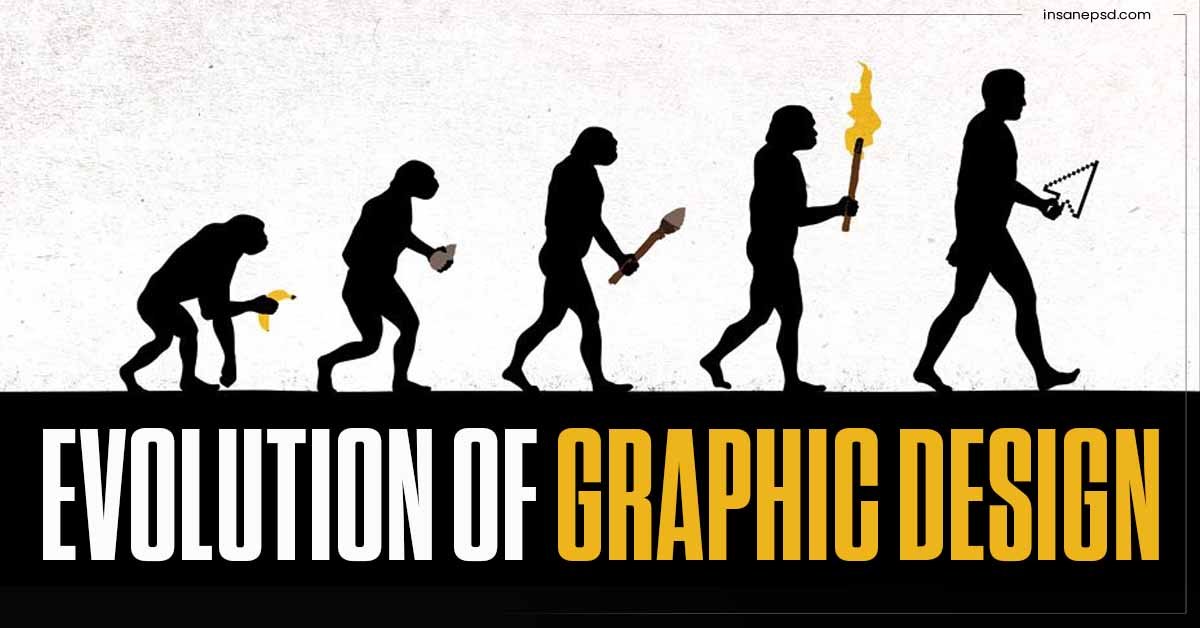I. Introduction
Graphic design, a pivotal aspect of visual communication, has undergone a remarkable evolution throughout history. From prehistoric symbols to today’s dynamic digital designs, the journey of graphic design reflects the changing paradigms of human expression. This article delves into the historical milestones, movements, and trends that have shaped the field of graphic design.
A. Definition of Graphic Design
Graphic design, at its core, is the art of combining text and images to convey a message or evoke a reaction. It is the visual language that bridges the gap between information and understanding.
B. Significance of Graphic Design in Communication
In a world inundated with information, graphic design plays a crucial role in capturing and maintaining the audience’s attention. It goes beyond aesthetics, serving as a powerful tool for effective communication.
II. Early Beginnings
A. Prehistoric Visual Communication
Long before the written word, early humans communicated through symbols and drawings. Cave paintings and ancient petroglyphs are early examples of visual storytelling.
B. Illuminated Manuscripts in the Middle Ages
With the advent of written language, illuminated manuscripts in the Middle Ages showcased intricate illustrations and ornate lettering, setting the stage for the marriage of text and design.
III. The Printing Press Revolution
A. Gutenberg’s Impact on Graphic Design
The invention of the printing press in the 15th century revolutionized graphic design, enabling the mass production of books and printed materials.
B. Rise of Typography
Typography emerged as a distinct discipline, with designers experimenting with fonts and layouts to enhance readability and visual appeal.
IV. The Art Nouveau Movement
A. Ornate Designs and Organic Forms
The Art Nouveau movement in the late 19th century embraced ornate, flowing designs inspired by nature, influencing the aesthetics of graphic design.
B. Influence on Graphic Design Principles
Art Nouveau’s emphasis on artistic expression and unconventional layouts laid the groundwork for modern graphic design principles.
V. The Birth of Modern Graphic Design
A. Bauhaus Movement
The Bauhaus movement in the early 20th century focused on merging art and industry, emphasizing simplicity, functionality, and the use of new materials.
B. Swiss Style and Minimalism
Swiss Style, characterized by clean lines and minimalistic design, further refined the principles of modern graphic design.
VI. The Digital Age
A. Introduction of Computers in Graphic Design
The advent of computers in the latter half of the 20th century revolutionized the graphic design process, allowing for unprecedented precision and efficiency.
B. Evolution of Software and Tools
Graphic design software and tools continued to evolve, providing designers with new capabilities and creative possibilities.
VII. Impact of the Internet
A. Web Design and User Experience
The internet brought forth new challenges and opportunities for graphic designers, emphasizing the importance of web design and user experience.
B. Social Media and Graphic Design Trends
Social media platforms became powerful vehicles for visual communication, influencing graphic design trends and viral aesthetics.
VIII. Contemporary Graphic Design
A. Diversity in Styles and Techniques
Today’s graphic design landscape is characterized by a diverse range of styles and techniques, reflecting the globalized and interconnected nature of the world.
B. The Fusion of Digital and Traditional Elements
Modern graphic designers often blend digital tools with traditional artistic elements, creating visually compelling and dynamic compositions.
IX. The Role of Graphic Design in Marketing
A. Creating Brand Identity
Graphic design plays a pivotal role in establishing and reinforcing brand identity, helping companies distinguish themselves in a crowded marketplace.
B. Importance in Advertising Campaigns
In advertising, graphic design is a key element in crafting compelling campaigns that capture attention and resonate with target audiences.
X. Future Trends in Graphic Design
A. Augmented Reality and Graphic Design
As technology advances, the integration of augmented reality into graphic design opens up new dimensions for interactive and immersive experiences.
B. Sustainability in Graphic Design Practices
A growing emphasis on sustainability prompts graphic designers to adopt eco-friendly practices and materials, shaping the future of the industry.
XI. Challenges and Opportunities
A. Overcoming Technological Challenges
While technology provides new tools, designers must navigate challenges such as information overload and changing design software landscapes.
B. Embracing Opportunities for Creativity
The evolving landscape presents endless opportunities for graphic designers to push creative boundaries and explore innovative solutions.
XII. Case Studies
A. Notable Graphic Design Projects
Examining successful graphic design projects provides valuable insights into effective strategies and execution.
B. Lessons Learned from Successful Campaigns
Analyzing the successes of past campaigns offers valuable lessons for aspiring graphic designers seeking to make an impact.
XIII. Expert Insights
A. Interviews with Graphic Design Professionals
Hearing from industry experts provides a firsthand perspective on the challenges and trends shaping the graphic design landscape.
B. Advice for Aspiring Graphic Designers
Seasoned professionals share advice for those entering the field, offering guidance on honing skills and navigating the competitive landscape.
XIV. Conclusion
A. Recap of Graphic Design Evolution
The journey from ancient symbols to modern digital designs underscores the dynamic evolution of graphic design as a communication tool.
B. Continued Importance in Communication
In an ever-evolving world, graphic design remains a vital force in effective communication, adapting to technological advancements and societal changes.
